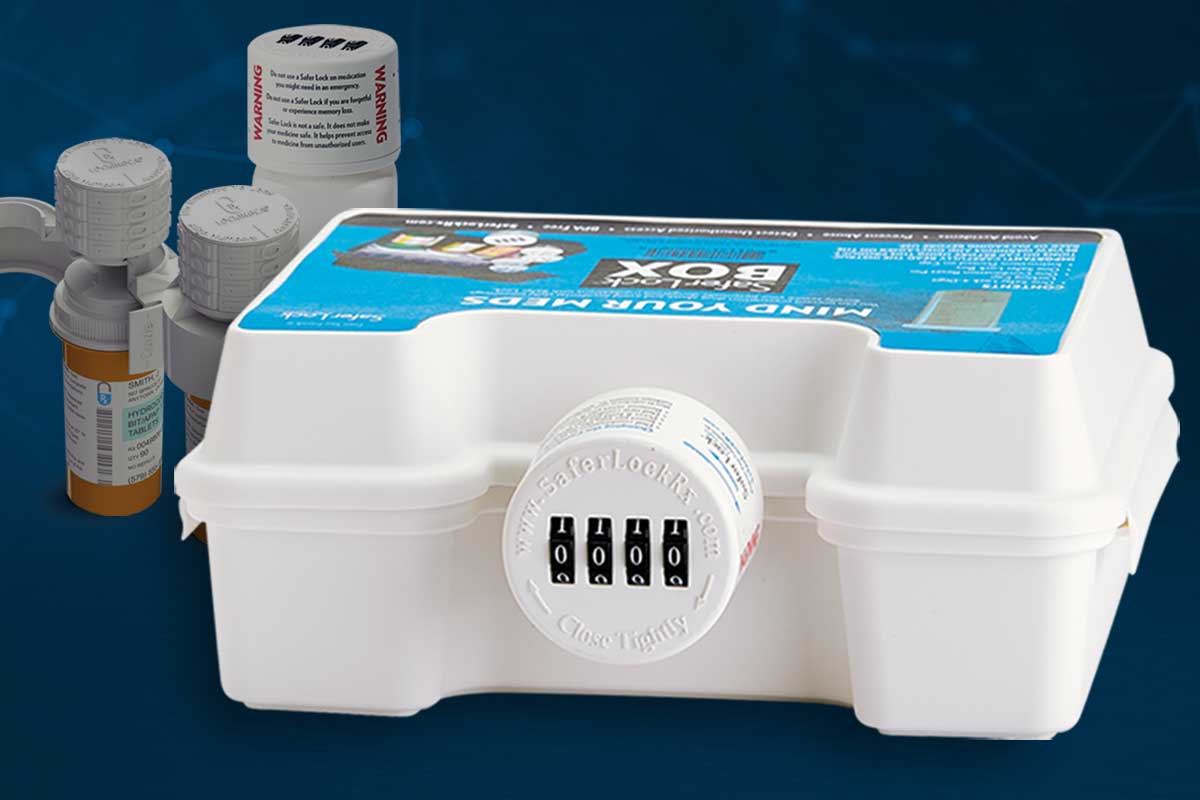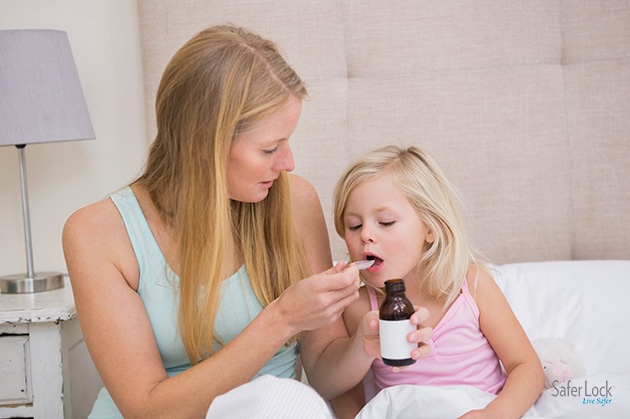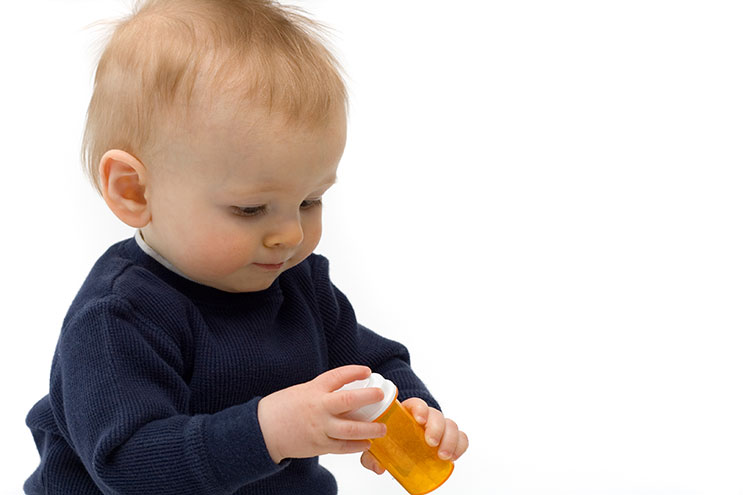What you may not know about locking medicine storage could be the difference between a life saved or one ruined. If you have a single prescription medication, this is the information you need to have.
Medications Are a Leading Cause of Accidental Poisoning
Medications are one of the leading causes of accidental deaths for children. The medications in your home could be the #1 hidden household danger that’s putting your family at risk. Each year, more than 60,000 kids aged five and under are treated in emergency rooms for medication poisoning. In nearly all cases, the young children got into medication in their own homes when a parent or caregiver wasn’t looking.
It’s not just your prescription painkillers that can be deadly to a young child…
Cholesterol-lowering drugs, diabetes drugs, and even Tylenol can be lethal to children.
Locking Caps and Boxes are More Effective Than a Childproof Cap
The childproof caps that come standard on your prescription meds may seem difficult to open for even some adults, but unfortunately, they aren’t keeping your kids out. Even the youngest of tots have demonstrated a frightening ability to open childproof lids in a matter of minutes
Medication Lock Boxes May Protect Teens From Rx Drug Use
Parents and grandparents need to know that teen use of prescription drugs is on the rise. By the time they’ve reached 12th grade, one out of every two teenagers has experimented with drugs. Many of these will experiment with the prescription pills found at home.
Teens often have access to unsecured medications in their own homes, or they can easily find prescription drugs in the medicine cabinets at the homes of friends or relatives.
Apart from vaping, the use of illicit substances among adolescents has significantly declined over the past few decades. However, the rate of teen overdoses has reached unprecedented levels, primarily due to the contamination of drugs mixed with fentanyl and the availability of more potent substances. The teen brain is primed for addiction. If a curious teen takes one or two prescription pills from an easily accessible bottle in your medicine cabinet, it can send them on the path to substance use disorder or an unintended overdose.
Shop the Safer Lock Box and secure the medications in your home.
Different Medicine Storage Options Fit Different Needs
How many prescription medications do you have in your home? How many times a day do you take your pills? Luckily, there are a variety of locking storage options that can fit your specific needs. For some people, a single combination locking cap is a great solution, particularly for pills you access throughout the day or keep with you in a purse, bag, briefcase, on a countertop, or in a bedside drawer.
For other people, a lock box or bag is the right solution to keep multiple medications that are only occasionally accessed out of the reach of children. For some, a combination of both storage options is a good fit. A lockbox can hold all of the medications in your home, and the most dangerous (or potentially addictive) pills can be fitted with a locking cap within the medicine lock box.
Locking Up Your Medication Won’t Lock You Out of Your Rx
Locking medicine storage may keep the children and teens in your home out of your medications, but that doesn’t mean it will make it harder for you to get to your pills.
The Safer Lock combination locking cap, for example, secures a single bottle of prescription medication with a 4-digit code that you can choose. You can set a combination that is easy for you to remember.
If arthritis or other physical conditions make a cap difficult to open, you could keep pills in a larger medication lockbox.
Secure Medicine Storage Can Reveal Potential Pilfering
It is important to note that locking up your meds won’t stop an addict who is determined to get to them. Unfortunately, a locking cap or box can still be forcefully opened in a variety of ways or even stolen from the premises.
However, if your pill bottle is missing or you see evidence of tampering or forceful entry, you will know it.
If a curious teen sneaks a single pill from an unlocked bottle, you may never know that drug misuse is happening in your home.
Educate Yourself and Family
While physical barriers like locks are important, educating yourself and family members about the risks of medication misuse is equally important. Online or in-person training can offer strategies for discussing the dangers of prescription drugs with children and teens, emphasizing the importance of respecting locked storage and understanding why it’s necessary.
The Emergency Medical Services Authority offers a list of centers and agencies that offer prevention training and support in poisoning situations. Download it here.
The Financial Impact
The financial consequences of medication theft and misuse can be significant. Lost or stolen medications often require costly replacements, and the misuse of these drugs can lead to increased healthcare expenses, including emergency room visits and long-term treatment costs.
Additionally, there may be legal implications if controlled substances are involved, potentially resulting in legal fees and fines.
Studies indicate that the economic burden of prescription drug misuse extends beyond individual households, affecting healthcare systems and public health resources. Secure medication storage is not just a matter of safety; it’s also a way to protect your financial investment in your health.
Community Involvement and How You Can Help
Improper medication storage isn’t just a private concern; it has broad public health implications. Communities across the country are facing increased rates of accidental poisoning and prescription drug misuse, issues that extend beyond individual households. Public health initiatives and campaigns, such as those led by the Substance Abuse and Mental Health Services Administration, aim to reduce these risks by promoting safe medication practices and educating the public about the dangers of unsecured medications.
Locking Medicine Storage May Save Lives
Every day, more than two thousand teens misuse a prescription drug for the first time. And every year, accidental drug overdoses are the number 1 cause of death for people under the age of 40. Drug overdose deaths outnumber those from suicide, homicide, and car accidents in the United States.
If you can keep your teen from curiously experimenting with a prescription drug, you may be saving them from the possibility of substance abuse, overdose, and death. And that’s not the only way locking up your meds saves lives, either. Medications are the leading cause of child poisoning deaths. Locking up your prescriptions may save your children from becoming statistics. A locking medicine box might even save their lives.
This post was originally published in 2015. It has been updated for 2024.



